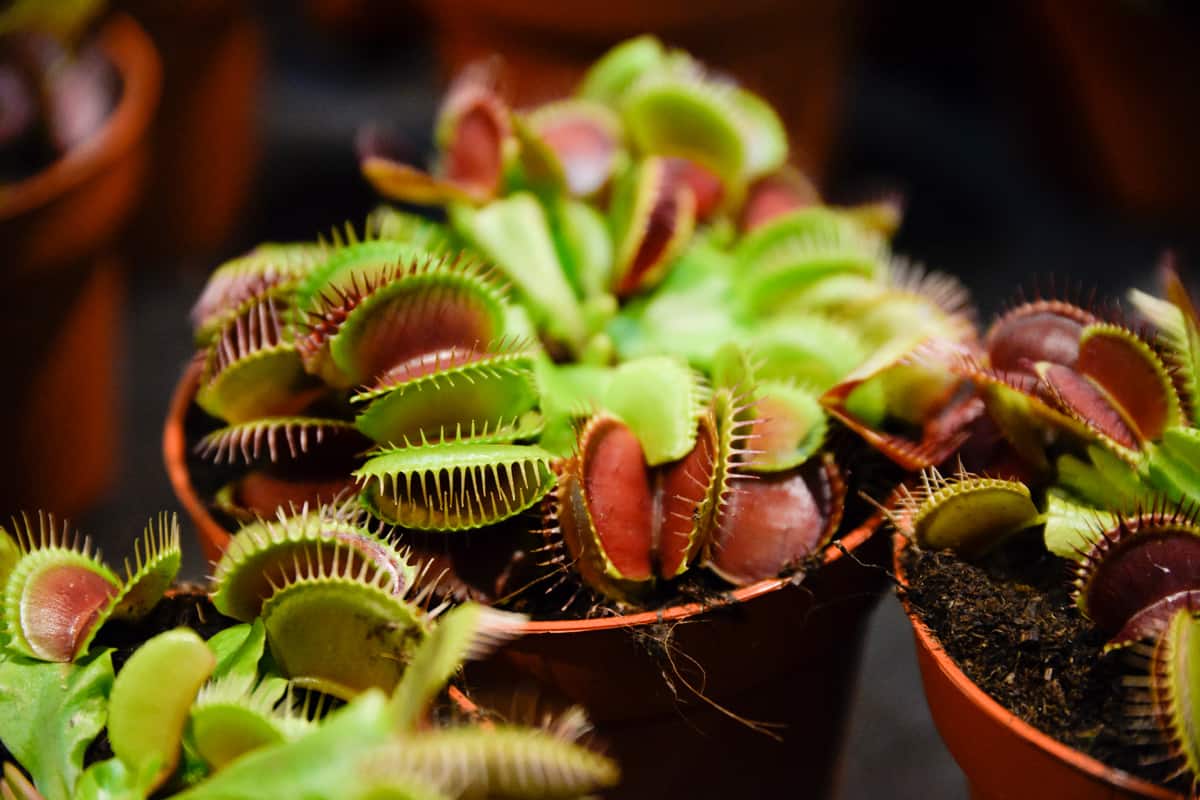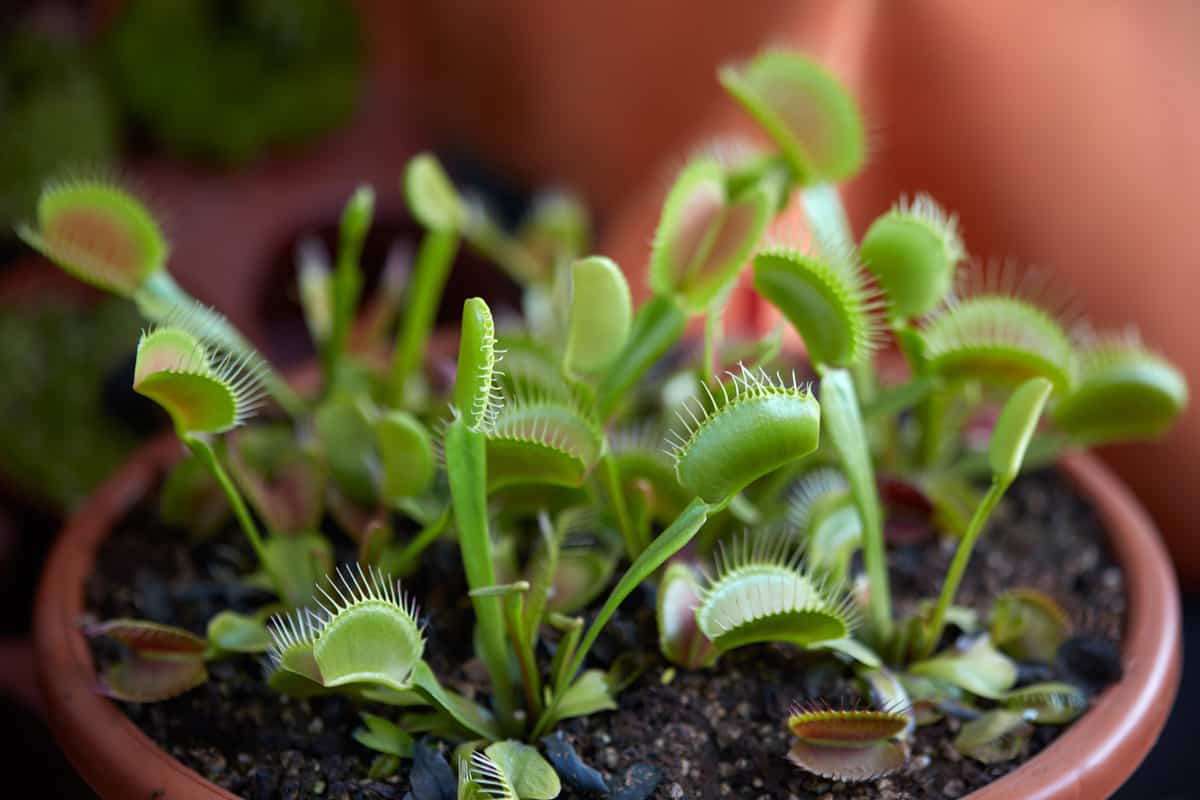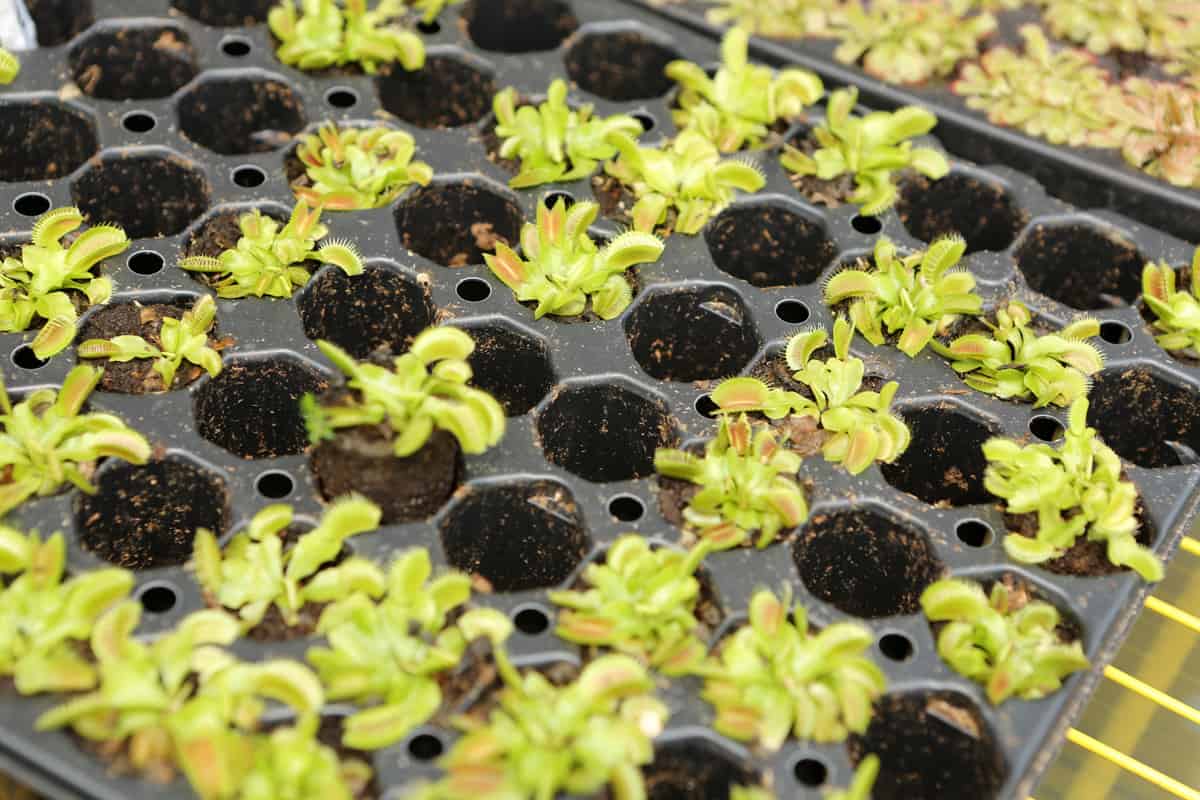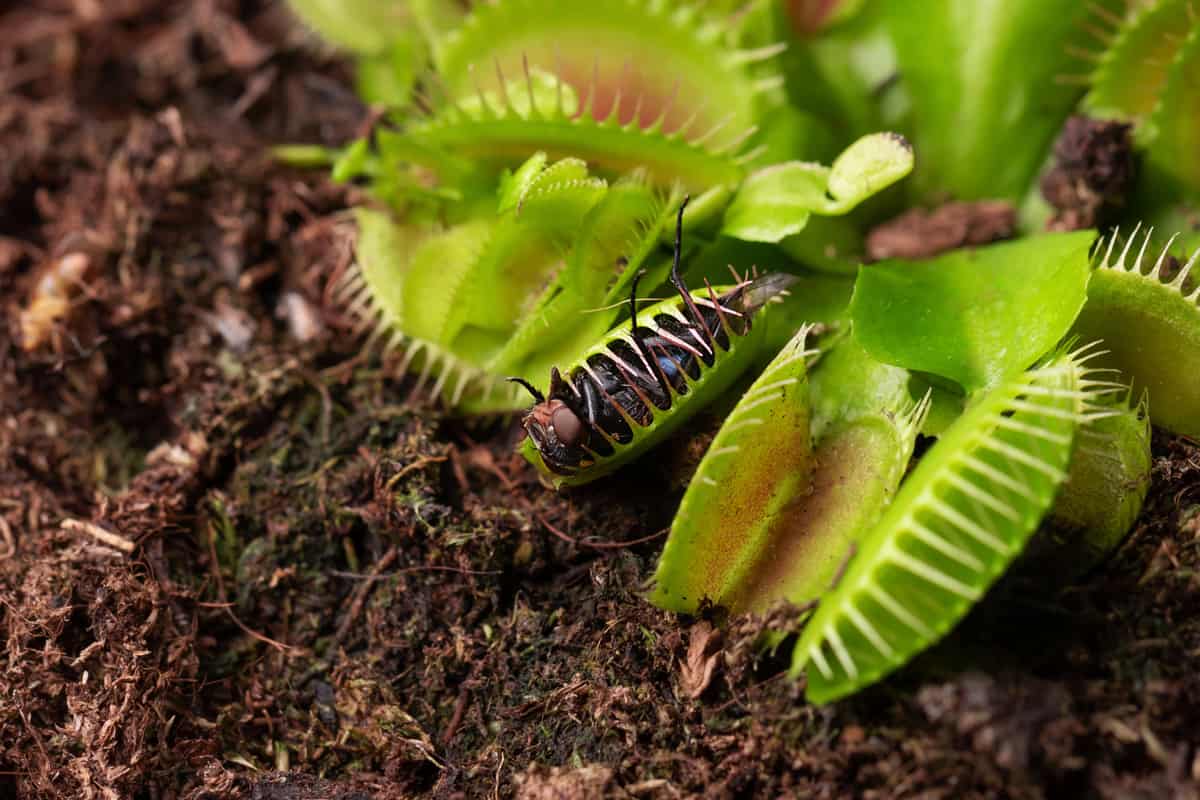Tending to carnivorous plants like Venus flytraps can be a gratifying hobby. These unique plants are usually fairly easy to care for, but aspects of their care can get more technical depending on your goals for the plant.
In particular, harvesting the seeds and propagation for Venus flytraps can be a little intimidating for those doing it the first time. We will discuss tips for this throughout this post.
To harvest seeds from a Venus flytrap, you must first wait until the seeds are ripe. Once they are, you can cut off the seed pods from the plant and carefully place them on a plate with paper towels.
Here, you can gently shake out the seeds from the dry seed pod and collect them on a paper towel. After harvesting, collect the seeds and plant them as soon as possible.
Collecting seeds is pretty straightforward, but there are additional tips to make it even easier. There is also much information to cover regarding propagation for Venus flytraps.
All the remaining information covered in this post will help you start your very own Venus flytrap from seeds you harvest yourself.
![Venus flytrap plant with Sphagnum moss growing around it., How To Harvest Venus Flytrap Seeds [Top Tips For Collection And Propagation]?](https://gardentabs.com/wp-content/uploads/2022/08/3.-How-To-Harvest-Venus-Flytrap-Seeds-Top-Tips-For-Collection-And-Propagation.jpg)
Venus Flytrap Propagation
Plant propagation is the process of growing new plants from one of many sources. With Venus flytraps, you can propagate using leaf cutting, division, or seeds.
Each process will give you a new Venus flytrap, but using seeds is the most common method. You must do each of these options at specific times to succeed.
The best year to propagate by division is late winter to early summer. Propagating by division means you cut a section of the original Venus flytrap and plant it in a separate location.
The section cut must have its root system. Otherwise, it will not be able to live once cut from the rest of the plant.
In early summer, you must peel the leaves off the main stem or rhizome for the leaf-cutting method.
After you peel the leaves, you can plant them in a mixture of sand and peat to grow. It may help the plant thrive if you cover it with a plastic bag.
This practice will promote humidity for the new Venus flytrap.
Lastly, you can propagate by harvesting and planting seeds from another flytrap. For this technique, you first have to have a mature Venus flytrap and collect seeds from it.
You can also buy seeds from nurseries, but they will likely have plants for sale instead. If cared for properly, these seeds will germinate in a few weeks and start growing a flytrap.

More About Venus Flytrap Seeds
As previously mentioned, you first need access to a mature Venus flytrap to start from seeds. Mature and healthy Venus flytraps flower during spring every year.
These flowers then dry out, leaving behind seed pods to be harvested. You have to carefully cut the dried parts off and collect them with something that will help you see the tiny black seeds as they fall out of the pod.
Once you remove all the pods from the plant, you can carefully start to remove seeds from the debris of the pods. The seeds are tiny, so this may take some time.
Then, store the seeds in a clear bag or cup until ready for planting. It is important to plant them sooner rather than later. These seeds lose viability after a few weeks.
If it's going to be a while before you plant, store the seeds in a refrigerator.
Planting the seeds is relatively easy once you gather the right materials. As long as the seeds are well-cared for, you should see signs of growth after a few weeks.
It takes about two years for the plants to reach adulthood, but you can transplant them around the one-year mark to give them more room.
What Is The Best Pot For A Venus Flytrap?

Venus flytraps need to be planted in pots providing adequate insulation for the plant roots. It is crucial these plants also have proper drainage in their pot.
This makes it harder for the flytraps to get too much water. The best pots for these can be made of plastic, glass, and glazed ceramic.
Certain pots may be of a material that could leak harmful minerals into the soil over time.
Make sure you know exactly what materials are in the pot before purchasing it, and then do some research to see if those can become a problem for your plant.
If you are worried about leaking minerals into the soil, signs to look for are yellowing leaves on the plant.
Check out this planter on Amazon here.
What Is The Best Potting Soil For A Venus Flytrap?
Carnivorous plants like Venus flytraps need light, breathable soil to grow well. These plants cannot get too much water but need to stay damp.
They must have great drainage in whatever container you plant them in. The right soil will aid in the water drainage for the Venus flytrap, especially if you combine the right dirt with the right pot.
The best potting soil for Venus flytraps will be one with higher acidity. Sphagnum peat moss is the best type of soil to fit this and the need for dampness.
The peat moss provides a damp, acidic environment for the Venus flytrap, and mixing it with sand will provide adequate water drainage.
You will most likely have to buy these separately and mix them yourself.
Check out this potting mix on Amazon.
How Often To Water Venus Flytrap Seeds
Once the harvested seeds from a Venus flytrap have been planted in the correct pot and soil, getting them the care they need to grow is the next priority.
Venus flytrap seeds should be in direct sunlight as often as possible. Sunlight is essential for growing seeds, but maintaining the correct water level will be the trickiest part.
Venus flytrap seeds will need the soil to remain damp until the plant has matured. Once mature, a flytrap can go nearly two weeks without being watered.
However, the new growing seeds will require much more than that.
You don't want to put too much water, or it may become waterlogged. Putting enough to keep the soil moist will give the seeds as much as they need to grow a strong, healthy plant.
How Long Before Venus Flytrap Seeds Sprout?
Growing a new Venus flytrap through seed propagation from another plant is for those with lots of patience.
Though the seeds must be used almost immediately after gathering them, they take quite a bit of time to grow enough to show progress.
As long as the seeds are carefully examined, they will begin germinating after two weeks. However, it is more likely they will take a little longer.
The typical time for seed germination in Venus flytraps is two to five weeks. This will be around when the seeds start to grow into very small Venus flytraps.
If you do not notice growth after five weeks, it may be a sign that something was wrong with their environment, and they could not grow.

Can Venus Flytraps Live Without Eating Bugs?

Since Venus flytraps are carnivorous plants, it is no surprise a large amount of their nutrition comes from catching and dissolving insects in the traps.
Even though these plants gain a lot from the bugs they catch, they can go without them for up to two months. This is one of the reasons Venus flytraps can thrive as indoor or outdoor plants.
If kept outside, the Venus flytrap will be able to attract more than enough insects regularly. Indoor flytraps, however, may have a harder time since there will be fewer insects inside a house.
This may require you to provide your flytrap with bugs every so often to ensure it gets the nutrients it needs.
In Summary
Though there are a few ways to propagate Venus flytraps, harvesting and replanting seeds from older plants is the most common method.
Harvesting these tiny seeds can be tricky due to their size, but once you remove the dried pods from the plant and separate the seeds from the debris, you should be well on growing new flytraps!
For information on other common indoor plants, please enjoy:



Not sure how much you make by linking to products but that planter is in no way good for VFT’s and your readers need to be warned. VFT’s require top watering. A self watering system retains too much water thereby increasing the chance of root rot.